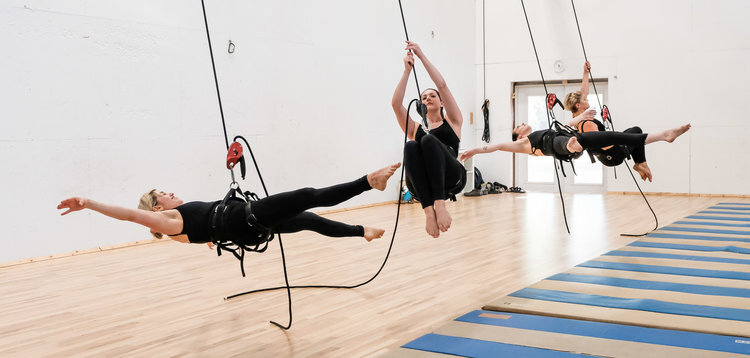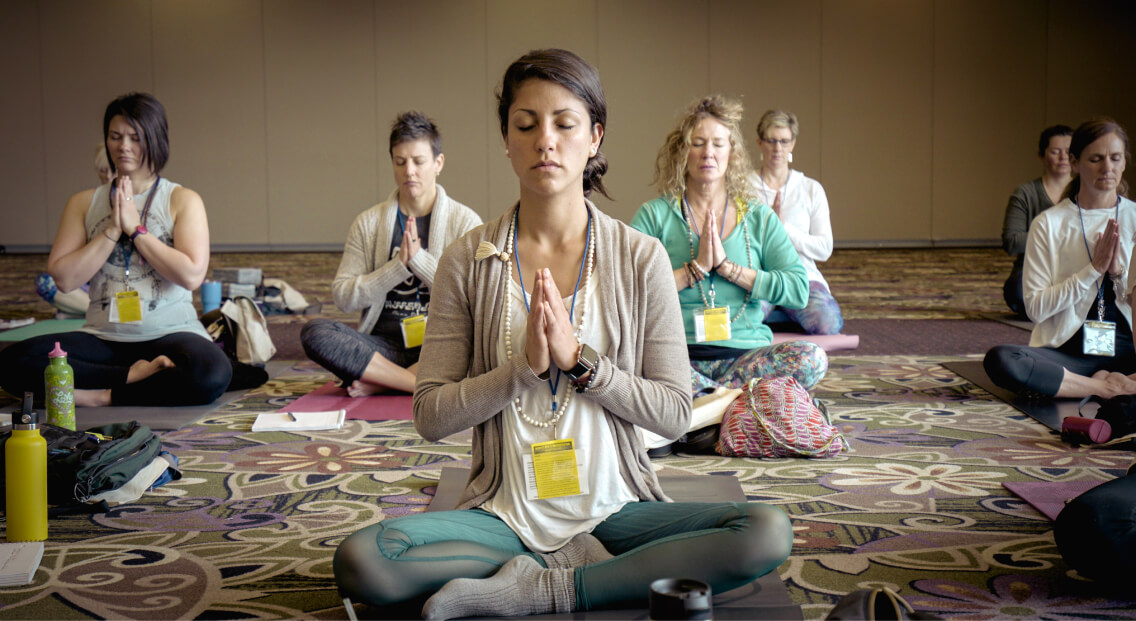Aerial yoga is basically an innovative fusion of traditional yoga and aerial acrobatics. It has garnered significant attention in recent years for its unique approach to fitness and wellness and also because some people feel the traditional yoga is boring. It’s a blend of traditional yoga, Pilates, and dance, offering a refreshing twist to your fitness routine. This form of yoga allows practitioners to experience the benefits of inversions and deep stretches while reducing the strain on the body. With its rising popularity, aerial yoga has become a favourite for many looking to increase flexibility, strength, and overall body awareness.

What is Aerial Yoga?
Aerial yoga uses a soft fabric hammock that’s suspended from the ceiling, providing support for a variety of poses. The hammock acts as a prop, enabling practitioners to perform postures that would be difficult or impossible on the mat. This aerial support allows for deeper stretches, more advanced inversions, and the opportunity to explore new ranges of motion. It’s suitable for practitioners of all levels, from beginners to seasoned yogis, and can be modified to suit individual abilities and needs. Please keep in mind that this form of yoga has very little significance towards your journey to light/enlightenment. Its just for making your body health and flexible.
Benefits of Aerial Yoga
One of the standout benefits of aerial yoga is its ability to improve flexibility. With the hammock supporting your body, you can achieve deeper stretches in a safe and controlled manner. Additionally, aerial yoga provides a gentle form of inversion therapy, which can help relieve tension in the spine and promote spinal alignment. The practice also helps to build strength, particularly in the core, upper body, and arms, as you engage your muscles to hold various poses while suspended. In recent time there are many research paper written for it. You can read in detail here.
Beyond physical benefits, aerial yoga has a positive impact on mental and emotional health. The ability to float and invert in the air can be liberating, helping to reduce stress and anxiety. It encourages a sense of weightlessness that fosters mindfulness and deep relaxation. Aerial yoga classes often incorporate elements of breathwork and meditation, promoting mental clarity and a stronger mind-body connection.
How Aerial Yoga Supports Inversions
Inversions are a major component of aerial yoga, and they are known to offer a variety of benefits. In traditional yoga, inversions like headstands and shoulder stands require a lot of strength and balance. In aerial yoga, the hammock supports the body in these poses, making them more accessible and safe. Inversions can improve circulation, increase blood flow to the brain, and help relieve tension in the lower back. They are also great for improving balance and body awareness. Over time, practicing inversions can even help to decompress the spine, which can counteract the effects of prolonged sitting and poor posture.
Who Can Practice Aerial Yoga?
One of the great things about aerial yoga is that it can be adapted to a wide range of fitness levels. Beginners can start with basic poses and gradually work their way up to more advanced aerial postures. People with limited mobility or those recovering from injuries may also benefit from the hammock’s support as it takes some of the pressure off joints and muscles. However, it is important for beginners to start with an introductory class to learn proper technique and get comfortable with the hammock. While aerial yoga is safe for most people, individuals with certain health conditions, such as glaucoma, heart disease, or joint issues, should consult their healthcare provider before starting.
Tips for a Successful Aerial Yoga Practice
If you’re new to aerial yoga, here are a few tips to make your practice more enjoyable and effective. First, wear comfortable, form-fitting clothes that won’t get caught in the hammock, and avoid clothes with zippers or buttons. It’s also a good idea to practice on an empty stomach, as inversions can cause discomfort if you’ve recently eaten. Be patient with yourself – aerial yoga can be challenging at first, but with consistent practice, you’ll begin to feel more comfortable and confident in the air. Always listen to your body and work within your limits, especially as you try new poses. And most importantly, have fun – aerial yoga is a playful and exhilarating way to reconnect with your body and discover new possibilities in your yoga journey.

